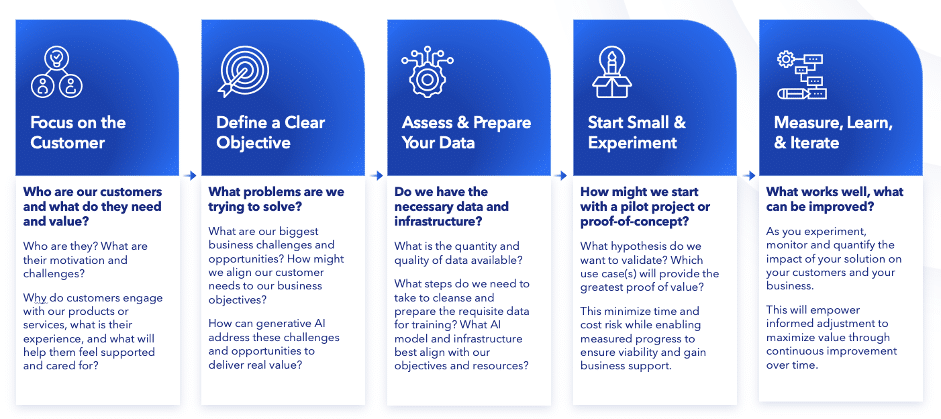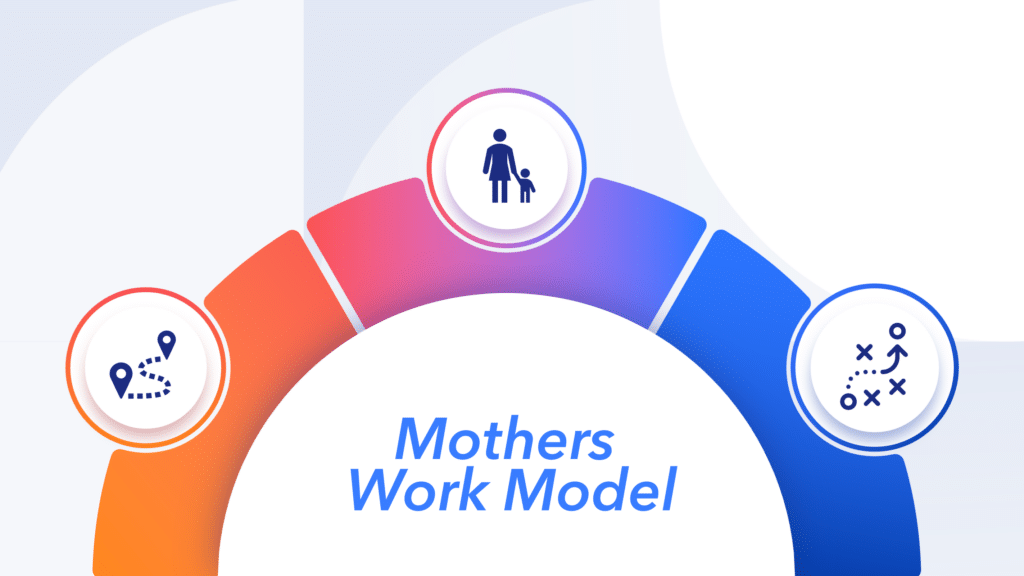Generative AI has sparked conversations everywhere, from boardrooms to coffee shops. Its ability to create text, images, and music with human-like quality has brought this rapidly evolving field of artificial intelligence into the limelight, promising to revolutionize various industries from healthcare to retail.
Businesses are making substantial investments in adopting generative AI technology, driven by the desire to automate tasks, improve efficiency, elevate customer experiences, and innovate new products and services to gain a competitive edge. According to a recent study by the Enterprise Strategy Group, over 50% of organizations will have adopted some form of generative AI in the next 12 months. Equally compelling, research conducted by the IBM Institute of Business Value found that 75% of CEOs believe organizations with the most advanced generative AI will have a competitive advantage. However, despite this tech-driven optimism, executives are wary of the risks that come with rapid change and need help preparing their organization for the journey.
6 generative AI challenges to overcome
As businesses explore the possibilities of generative AI, it is essential not to let the promise of innovation obscure pragmatism. McKinsey Global Institute that generative AI has the potential to increase corporate profits by up to $4.4 trillion a year. On the other hand, a Harvard Business Review guide on generative AI cautions that as much as 80% of AI project fails, which is almost double the rate of corporate IT project failures a decade ago.
The reasons businesses struggle with the adoption of generative AI can vary but often come down to a few key characteristics:
1. Lack of clear and realistic objectives
Projects without clear direction and purpose will miss out on delivering any real value to their customers and their business. Further, assuming generative AI will solve all problems without understanding its limitations can lead to disappointment or even project failure.
2. Lack of quality data
Generative AI solution is only as good as the data it is trained on, and models require a significant amount of data. Inadequate or low-quality data may hinder performance and result in biased, unreliable, or even invalid content.
3. Inadequate ethical or regulatory compliance
Ensuring that the data used for training is anonymized and complies with data privacy regulations is vital to protect user privacy. Neglecting ethical considerations and failing to comply with regulations can cause reputational damage and even result in legal consequences.
4. Over-reliance on AI
Generative AI is a powerful tool, but it cannot replace human judgment entirely. Even automated tasks should involve a human-AI check-and-balance to validate the process, prevent errors, and ensure that AI is used responsibly. Humans and technology are both better together.
5. Neglecting the human experience
Like any elegant digital product or service, technology is at its best when crafted with a deep understanding of human values and needs. Overlooking the nuances of the human experience can foster user frustration, disengagement, and jeopardize adoption and brand trust.
6. Lack of expertise
Generative AI is a complex technology that requires expertise to develop and deploy. Insufficient understanding of the technology and best practices can impede progress or result in errors.
Businesses that rush to adopt generative AI without a thoughtful plan, clear understanding, or the right resources can end up with lost revenue, wasted investments, and even causing harm to customers and employees. To avoid these pitfalls and ensure successful generative AI adoption, it is crucial to take a deliberate and strategic approach.
5 key steps to your generative AI adoption journey
In an era when technology profoundly shapes our interactions and expectations, adopting generative AI with a human-centered approach is key to harnessing the true potential of this emerging technology for your business. By first deeply understanding customer needs and then defining objectives aligned to those needs, businesses can thoughtfully experiment with targeted use cases where generative AI can improve customer experiences and drive strategic goals. Consider this framework as you embark on your generative AI adoption journey:
1. Focus on the customer
Start by understanding WHO your customers are, WHY they engage with your products and services, and WHAT their motivation and challenges are. Consider how generative AI can be integrated into your existing customer experience processes to increase your understanding.
2. Define a clear objective
Align your customer needs and values to your business’s strategic objectives to uncover the areas of the greatest opportunity for generative AI to deliver real value. Working with business and technology experts, you can consider different generative AI solutions and evaluate the options that can best fit your needs.
3. Assess and prepare your data
The foundation of effective generative AI lies in robust data training, which necessitates substantial data volume and impeccable quality. It is imperative to evaluate your data’s quality, quantity, security, and privacy, establish a well-structured architecture, and prepare your data to optimize AI performance.
4. Start small and experiment
Working backward from the customer’s experience, start small and experiment in an agile manner. Identify an initial use case and run a small pilot or proof-of-concept to validate your hypothesis and test for effectiveness and impact. This will minimize time and cost risks while enabling you to ensure viability and demonstrate proof of value.
5. Measure, learn, and iterate
Monitor and quantify the impact of your generative AI solution on your customers and key business metrics. This will help illuminate what is working well and what is not, enabling your team to make informed decisions about where and how to adjust the technology to maximize value through continuous improvement over time.

Innovation flourishes when customer needs and expectations are exceeded in new and novel ways. While generative AI holds exciting promise, it is not a silver bullet and cannot replace human intelligence entirely. This approach enables businesses to deploy generative AI thoughtfully, paving a journey that is not just about deploying cutting-edge technology but is an evolutionary process that stays true to enhancing the human experience at every touchpoint.
Navigating the balance of technology and humans
While this rapidly advancing technology has captured the attention and energy of businesses, the optimism for its opportunity is balanced by wariness for the accompanying risks. Those who go beyond the technology hype and deploy generative AI thoughtfully with a human-centered approach and rapid experimentation can craft innovative solutions, gain a competitive edge, and deepen their bonds with customers.
In this complex terrain of generative AI, consider partnering with experienced professionals to amplify your likelihood of success. Having a trusted ally with specialized expertise and strategic insights can help you navigate challenges, guide you in making informed decisions to harness the power of AI responsibly, and implement solutions that not only work technically but deliver meaningful experiences to your customers and true value to your business.


















